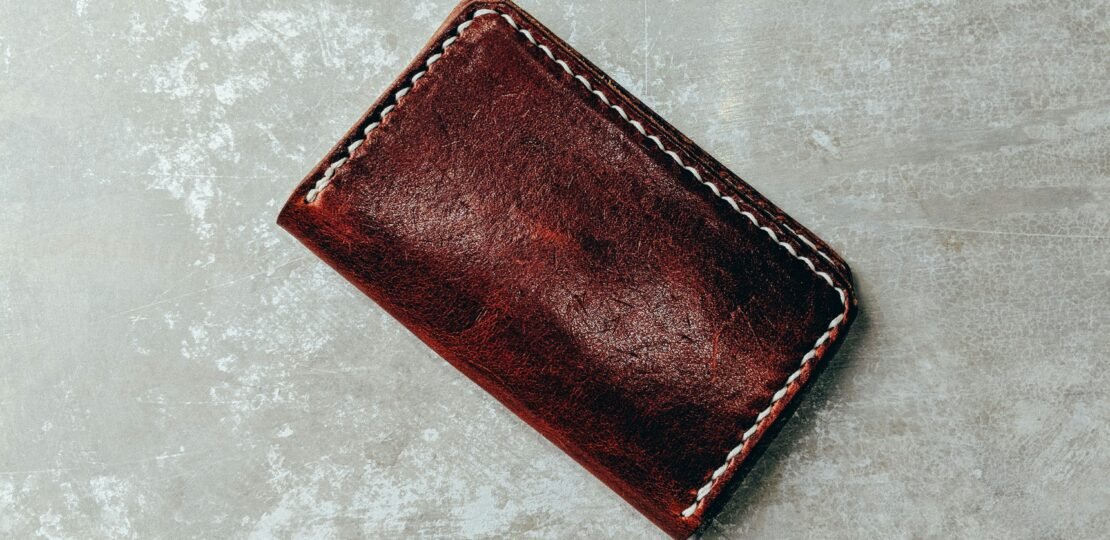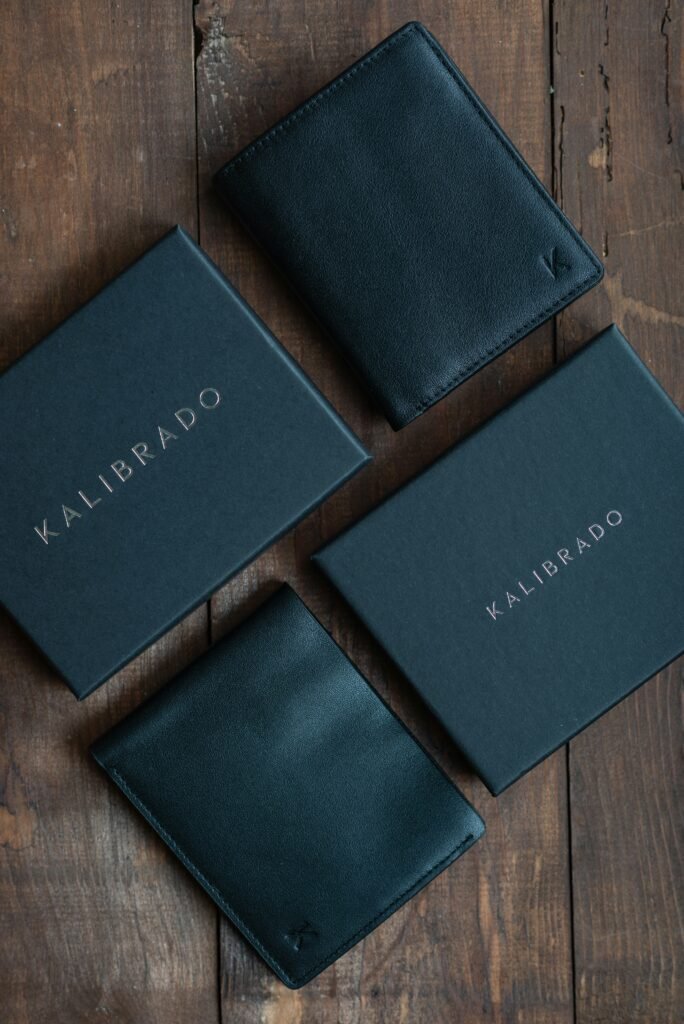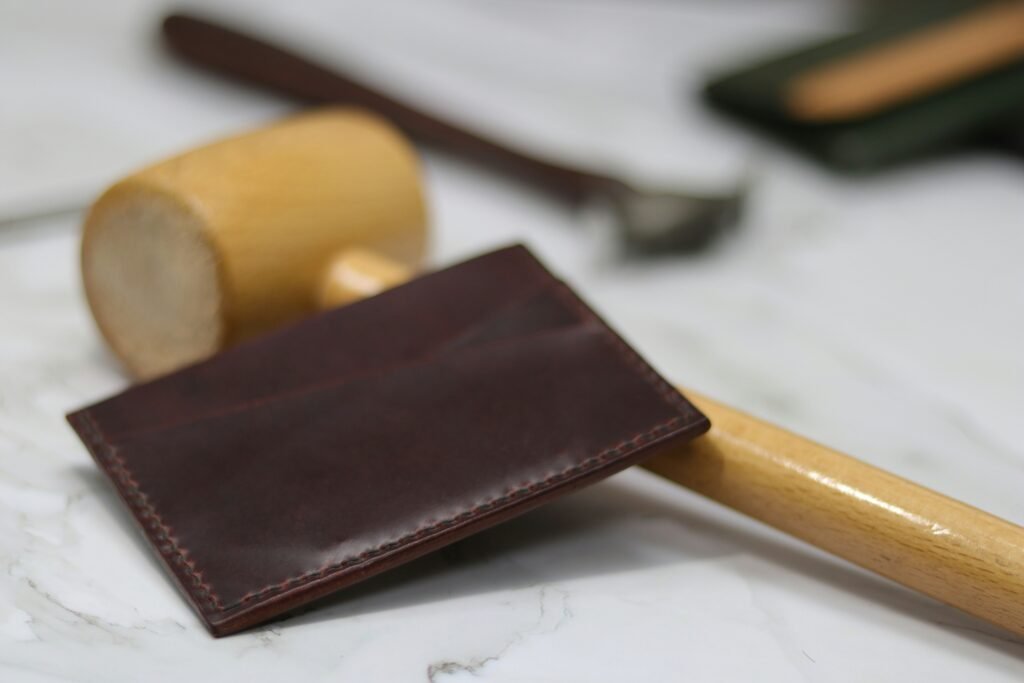
Congratulations on your new wallet! In this article, we will provide you with some valuable tips on how to take care of and maintain your long-lasting wallet. As an essential accessory that holds your most valuable possessions, it’s important to ensure that your wallet remains in good condition. We will explore various techniques and practices that will help keep your wallet looking and functioning at its best for years to come. So, let’s get started on maintaining the longevity of your wallet!
Check out our product reviews.
Cleaning the Wallet
Using a Soft Cloth
When it comes to cleaning your wallet, using a soft cloth is essential. A soft cloth will help to avoid any scratches or damage to the material of your wallet. Avoid using rough or abrasive materials, such as brushes or sponges, as they can cause unwanted marks on the surface. Simply dampen the cloth slightly with water or a mild soap solution, and gently wipe down the exterior of the wallet. Remember to pay attention to any seams or crevices where dirt and debris may accumulate.
Avoiding Harsh Chemicals
Harsh chemicals can be detrimental to the quality and durability of your wallet. To avoid damaging the material or causing discoloration, it is important to steer clear of any products that contain bleach, ammonia, or other harsh chemicals. These substances can strip away the natural oils and protective coating of the wallet, leaving it vulnerable to cracking and fading. Stick to using mild soap or leather cleaner specifically designed for wallet care, and always follow the instructions on the product label.
Removing Stains
Stains on your wallet can be unsightly and can diminish its overall appearance. To remove stains, it is important to act quickly. First, blot the stain gently with a clean, damp cloth to remove any excess liquid or substance. Then, apply a small amount of mild soap or leather cleaner to a clean cloth and gently dab the stain. Avoid rubbing vigorously, as this can further spread the stain or damage the material. If the stain persists, it may be best to seek professional help to prevent further damage.
Drying the Wallet
After cleaning or treating your wallet, it is important to ensure that it is thoroughly dried before storing or using it again. Excessive moisture can lead to mold or mildew growth, which can severely damage the wallet. To dry the wallet, gently dab it with a dry, clean cloth to remove any excess moisture. Avoid using direct heat sources, such as hairdryers or heaters, as these can cause the material to crack or shrink. Instead, allow the wallet to air dry naturally in a well-ventilated area away from direct sunlight.
Preventing Damage
Keeping Away from Moisture
Moisture is one of the biggest enemies of wallets, especially those made from leather or fabric. Exposure to moisture can lead to mold or mildew growth, which can cause irreversible damage. It is important to keep your wallet away from water, rain, or any other sources of moisture. If your wallet does get wet, make sure to dry it thoroughly as soon as possible, following the steps mentioned in the previous section. Additionally, avoid placing your wallet on wet or damp surfaces to prevent absorption of moisture from the environment.
Avoiding Extreme Temperatures
Extreme temperatures can have a detrimental effect on the material of your wallet. Excessive heat can cause leather to dry out and crack, while extreme cold can cause it to become stiff and brittle. It is best to avoid exposing your wallet to extreme temperatures or sudden changes in temperature. Avoid placing your wallet near heaters, fireplaces, or any direct sources of heat. Similarly, do not leave your wallet in a car on a hot summer day or in freezing temperatures during winter. Instead, store your wallet in a cool and dry place, away from any temperature fluctuations.
Protecting from Sharp Objects
Sharp objects can easily cause scratches or tears on the surface of your wallet. To prevent accidental damage, it is important to keep your wallet away from any objects with sharp edges or points, such as keys or pens. Store your wallet in a separate compartment or pocket of your bag to minimize the risk of it coming into contact with sharp objects. Additionally, avoid placing heavy or bulky items on top of your wallet, as they can also cause pressure marks or indentations.

This image is property of images.unsplash.com.
Check out our product reviews.
Storing the Wallet
Using a Dust Bag
Proper storage is essential for maintaining the longevity and condition of your wallet. When not in use, it is recommended to store your wallet in a dust bag. A dust bag helps to protect the wallet from dust, dirt, and other particles that can accumulate and damage the material over time. If your wallet did not come with a dust bag, you can use a soft, breathable fabric pouch or wrap it in a clean, lint-free cloth instead. Avoid using plastic bags or containers, as they can trap moisture and lead to mold growth.
Avoiding Overstuffing
Overstuffing your wallet can put unnecessary strain on the material, causing it to stretch or warp. It can also make your wallet bulkier and less comfortable to carry. To prevent this, only carry the essential items you need on a daily basis and remove any unnecessary receipts, cards, or coins. This will not only help to keep your wallet in good shape but also make it easier to find what you need quickly. If you find that your wallet is constantly bulging, it may be time to consider organizing and decluttering its contents.
Keeping in a Dry Place
Humidity can have a negative impact on the quality and appearance of your wallet. To prevent moisture build-up and mold growth, it is important to store your wallet in a dry place. Avoid storing your wallet in areas such as bathrooms or basements, as they tend to be more humid. Instead, opt for a cool and dry location, such as a bedroom drawer or a closet. If you live in a particularly humid climate, consider using a dehumidifier in the storage area to keep the humidity levels in check.
Regularly Checking for Damage
Regularly inspecting your wallet for any signs of damage or wear and tear is an important part of maintaining its condition. Check for loose stitches, tears, or any other visible damage that may need immediate attention. If you notice any issues, it is best to address them as soon as possible to prevent further damage. Catching and repairing small problems early can extend the lifespan of your wallet and save you from having to invest in a new one sooner than expected.
Leather Care
Using Leather Conditioner
Leather wallets require regular conditioning to keep the material supple and prevent it from drying out or cracking. Leather conditioner helps to replenish the natural oils and maintain the overall quality of the leather. Apply a small amount of leather conditioner onto a clean, soft cloth and gently massage it into the surface of the wallet. Pay special attention to any areas that may appear dry or dull. Let the conditioner absorb into the leather for a few minutes, and then buff away any excess with a clean cloth.
Avoiding Direct Sunlight
Exposure to direct sunlight can cause leather wallets to fade, dry out, and become brittle over time. To prevent color fading and damage, it is important to avoid leaving your wallet in direct sunlight for extended periods. If you need to store or display your wallet in a well-lit area, consider using a UV-protective spray or applying a leather protectant product that offers sun protection. Additionally, when not in use, store your wallet in a cool and dark place to further shield it from harmful UV rays.
Cleaning with Leather Cleaner
In addition to regular conditioning, occasional cleaning is necessary to remove dirt, grime, and oils that can accumulate on the surface of your leather wallet. Using a leather cleaner specifically designed for the type of leather used in your wallet, apply a small amount onto a clean, soft cloth. Gently rub the surface of the wallet in circular motions, focusing on any visibly dirty areas. Avoid saturating the leather with too much cleaner and always follow the manufacturer’s instructions. Once cleaned, allow the wallet to dry naturally before conditioning.
Buffing with a Soft Cloth
After cleaning or conditioning your leather wallet, buffing it with a soft cloth will help to restore its natural shine and remove any excess product. Using a clean, dry cloth, gently rub the surface of the wallet in circular motions. This will not only give the leather a polished appearance but also help to distribute any remaining conditioner or cleaner evenly. Remember to use a soft cloth specifically designed for leather care to avoid any scratches or damage to the surface.

This image is property of images.unsplash.com.
Repairing the Wallet
Repairing Loose Stitches
Over time, the stitches on your wallet may become loose or start to unravel. Loose stitches can compromise the structural integrity of the wallet and make it more susceptible to further damage. If you notice any loose stitches, it is best to repair them promptly to prevent the problem from worsening. You can use a needle and thread that matches the color of your wallet to restitch the loose area. If you are not confident in your sewing skills, it is recommended to seek professional assistance to ensure a proper, durable repair.
Replacing Damaged Zippers
A faulty or damaged zipper can make it difficult to open or close your wallet, and in some cases, it may prevent you from using it altogether. If the zipper on your wallet is broken or no longer functioning properly, it may be necessary to replace it. Zipper replacement kits are available in most craft or sewing stores and typically include a new zipper and instructions on how to install it. If you are unsure about replacing the zipper yourself, don’t hesitate to consult a professional repair service to ensure a seamless and secure replacement.
Fixing Broken Snaps or Buttons
Snaps and buttons on wallets can sometimes break or become loose over time. If you find that the snap or button on your wallet is no longer functioning properly, it may need to be replaced. Depending on the design of your wallet, you may be able to find replacement snaps or buttons in craft stores or online. However, if the repair requires specialized tools or skills, it is advisable to take your wallet to a professional repair service. They will have the necessary expertise to fix or replace the broken hardware without compromising the quality of your wallet.
Preventing Color Fading
Avoiding Sun Exposure
Sun exposure can cause the color of your wallet to fade over time, particularly if it’s made of materials such as leather or fabric. To prevent color fading, it is important to minimize your wallet’s exposure to direct sunlight. When not in use, store your wallet in a cool and dark place, away from windows or areas with intense sunlight. Additionally, consider using a UV-protective spray specifically designed for the material of your wallet. These sprays create a protective barrier that helps to reduce color fading caused by UV rays.
Using Leather Protectant
For leather wallets, using a leather protectant is an effective way to shield the material from color fading. Leather protectants create a barrier between the leather and external factors, such as sunlight, moisture, and dirt. Before applying a leather protectant, make sure the leather is clean and dry. Spray a thin, even layer of the protectant onto the surface of the wallet, following the manufacturer’s instructions. Allow the protectant to dry completely before using or storing your wallet. Regular application of a leather protectant will help to preserve the color and condition of your wallet.
Keeping Away from Dyes or Liquids
To prevent color transfer or staining, it is important to keep your wallet away from dyes, inks, or liquids that may cause damage. Avoid placing your wallet next to items such as pens, markers, or makeup products that have the potential to leak or bleed. If your wallet does come into contact with any liquids, promptly blot the affected area with a clean, dry cloth to absorb as much liquid as possible. Do not rub, as it may spread the liquid or push it further into the material. If necessary, seek professional cleaning services to remove stubborn stains or blemishes.

This image is property of images.unsplash.com.
Dealing with Odors
Using Baking Soda
Unpleasant odors can develop in your wallet over time, particularly if it comes into contact with sweat or other organic substances. To eliminate or minimize odors, baking soda can be used as a natural deodorizer. Sprinkle a small amount of baking soda directly onto the inside of your wallet and leave it overnight. The baking soda will absorb any odors, leaving your wallet smelling fresh. In the morning, simply shake out any excess baking soda and wipe the interior with a clean cloth to remove any residue.
Ventilating the Wallet
Proper ventilation is essential to prevent the build-up of odors inside your wallet. After each use, make it a habit to open your wallet and let it air out for a few minutes. This will allow any trapped moisture or odors to dissipate. Avoid storing your wallet in a closed compartment or in an airtight container, as this can promote the growth of unpleasant odors. If your wallet still retains a lingering smell even after ventilation, consider using a fabric or leather spray specifically designed to eliminate odors.
Avoiding Strong Perfumes or Chemicals
While it may be tempting to use strong perfumes or chemical-based odor sprays to mask unpleasant smells, it is best to avoid doing so. Strong perfumes or chemicals can potentially damage the material of your wallet and alter its natural scent. Instead, focus on eliminating odors by following the previous tips of using baking soda, ventilation, and using specialized sprays that are safe for wallet materials. By taking a natural and gentle approach, you can effectively eliminate odors without harming your wallet in the process.
Handling Different Wallet Materials
Caring for Genuine Leather Wallets
Genuine leather wallets require regular care to maintain their appearance and durability. Follow the cleaning and conditioning steps provided in the previous sections to keep your genuine leather wallet in excellent condition. Additionally, it is important to note that genuine leather may develop a natural patina over time, which is a desirable sign of quality and aging. Embrace the patina as a testament to the unique character of your wallet, and continue to provide it with proper care to ensure its longevity.
Taking Care of Faux Leather Wallets
Faux leather wallets, also known as synthetic or vegan leather, require a slightly different care routine compared to genuine leather wallets. While faux leather is more resistant to water and stains, it still requires regular cleaning and maintenance to keep it looking its best. Clean your faux leather wallet with a soft cloth and mild soap solution, just like with genuine leather wallets. However, avoid using leather conditioners or protectants, as they can cause a buildup or discoloration on the synthetic material. Instead, focus on gentle cleaning and timely stain removal to preserve the appearance of your faux leather wallet.
Maintaining Fabric Wallets
Fabric wallets, such as those made from cotton, canvas, or polyester, require specific care to keep them clean and in good condition. Regularly check the care instructions provided by the manufacturer before attempting any cleaning methods. In general, fabric wallets can be spot cleaned using a mild soap solution or a fabric cleaner. Gently blot the stained area with a clean cloth, being careful not to rub or scrub vigorously, as this can damage the fabric. Allow the wallet to air dry naturally, and iron on a low setting if necessary. For stubborn stains or more delicate fabrics, it is best to seek professional cleaning services.
Special Considerations for Traveling
Keeping Wallet Secure
While traveling, it is important to keep your wallet secure to prevent loss or theft. Consider using a wallet with a hidden or zippered compartment to store your valuables, such as cash, passports, or important cards. Keep your wallet in a secure and easily accessible place, such as a front pocket or a crossbody bag, to minimize the risk of pickpocketing. Avoid displaying large sums of money or valuable items when using your wallet in public, as this can attract unwanted attention. Stay vigilant and aware of your surroundings to ensure the safety of your wallet and personal belongings.
Using a Travel Wallet
Investing in a travel wallet can provide added convenience and security when on the go. Travel wallets are specifically designed to accommodate travel essentials, such as passports, boarding passes, and multiple currencies. They often feature additional security features like RFID-blocking technology to protect your personal information from electronic theft. Consider purchasing a travel wallet that suits your needs and preferences, and transfer your essential items into it before embarking on your journey. This will help to keep everything organized and easily accessible, saving you time and minimizing the risk of losing important documents.
Having a Back-up Plan
Even with the utmost care and precautions, accidents can happen, and wallets can go missing. Before traveling, it is important to have a backup plan in case your wallet is lost or stolen. Make copies of your important documents, such as passports and identification cards, and keep them in a separate and secure location. Consider carrying a small amount of emergency cash in a hidden compartment, or have access to multiple forms of payment, such as a backup credit card or a mobile payment app. By being prepared, you can ensure a smoother experience even in unexpected situations.
Professional Cleaning and Repair
Finding a Reputable Cleaner
If your wallet requires professional cleaning, it is crucial to find a reputable cleaner experienced in handling wallet materials. Look for cleaners who specialize in leather or fabric care and have positive customer reviews. Avoid dry cleaners that do not have specific knowledge or expertise in wallet care, as they may use harsh chemicals or incorrect techniques that can damage the material. Before entrusting your wallet to a professional cleaner, make sure to communicate your concerns and expectations clearly, and inquire about their cleaning methods and guarantees.
Seeking Professional Repair Services
For more extensive repairs or damage, seeking professional repair services is the best course of action. Professional repair services have the expertise and tools necessary to fix various types of damage, including broken zippers, torn seams, or hardware replacements. Research reputable repair shops that specialize in wallet repair and restoration. Read customer testimonials and reviews to ensure their reliability and quality of work. Discuss the issues with your wallet in detail with the repair technician, and ask for a clear explanation of the repair process and associated costs. By choosing a professional repair service, you can breathe new life into your damaged wallet and prolong its usability.
In conclusion, proper care and maintenance are crucial in ensuring the long-lasting durability and appearance of your wallet. By following the tips and guidelines provided in this article, you can keep your wallet looking its best for years to come. Remember to clean regularly, store properly, and address any signs of damage promptly. With a little effort and attention, your wallet will continue to serve you faithfully while adding a touch of style to your everyday life. Happy wallet care!
RELATED POSTS
View all


